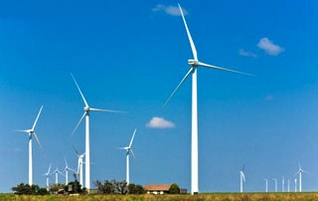Energy
| Wind Turbines |
|---|
 Today, wind power is one of the world’s fastest growing energy sources. Technologies used in harnessing wind energy are continuing to expand and must deal with big challenges of leading to more reliable and energy efficient wind turbines. Today, wind power is one of the world’s fastest growing energy sources. Technologies used in harnessing wind energy are continuing to expand and must deal with big challenges of leading to more reliable and energy efficient wind turbines.
Turbine blades are large, flexible structures subjected to transient aerodynamic excitations of large magnitude. Dynamic loads lead to dramatic failures of gear-pinions and bearings due to fatigue. As a result there are significant challenges in designing the power train and gearbox in particular. Frequently there are large load amplifications within the gearbox than what are predicted at the rotor shaft. Due to increasing power output requirements, the increases in rotor shaft diameters pose greater constraints arising out of size and weight. There is a compelling need for simulation tools capable of modeling and predicting dynamic behavior of wind turbines. Inaccuracies in modeling arising from neglecting the flexibility of components and joints can lead to missing out key medium and high vibration modes. Simulation models of the dynamic characteristics of an assembled wind turbine are extremely complex to generate. Accounting for structural and aero-elastic properties of a wind turbine properly in such complex models is necessary.Operation deflection modes can affect alignment of power train and lead to fatigue. Correlation studies are necessary for events like load reversals, emergency stops, turbulent conditions. |


